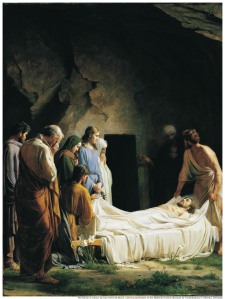
Forget Henry Lincoln’s The Holy Place, Richard Andrews & Paul Schellenberger’s The Tomb of God or any other conspiracy derivative of The Holy Blood and the Holy Grail that claims the body of Jesus is hidden in south-west France: a Devon (UK) resident, Michael Goldsworthy, claims to have located the tomb of Jesus in south-west England. Billed by that bastion of fact-checking, The Sun, as an “amateur archaeologist”, Mr Goldsworthy has started with a medieval text that he believes holds clues to unravelling a host of religious mysteries.
Although the press reports announcing the “discovery” only appeared in October 2012, Mr Goldsworthy has been promoting his idea for some time. There is a book, of course, And Did Those Feet…?, which claims to give “definitive answers” to a variety of questions. Instantly, we can see that we’re in ley line territory, as the first question is “What is the relationship between the Neolithic works dotted around the British landscape, and those who built the many churches on pre-exiting pagan sites?. Despite a recent comment by someone called randy, there is no evidence to support the idea of ley lines; nor is there evidence that “many churches” were built on “pre-existing pagan sites”, let alone Neolithic sites. When confronted with a claim like this, made without any qualification or reservation, we can see instantly that we are dealing with ideas that are not grounded in evidence-based archaeology. Instead, we are in realms of unbridled speculation.

So, what are Mr Goldsworthy’s claims, according to the recent press reports (which perhaps derive from a press release)? According to Ted Harrison in the Western Morning News, Mr Goldsworthy has located burials on Burgh Island, a privately owned island off Bigbury on the south-west coast of Devon known to readers of Agatha Christie’s novels as the setting for And Then There Were None and Evil under the Sun. There is said to have been a monastery on the island, demolished in the nineteenth century to make way for the hotel that stands there, although it does not appear on a list of monastic houses in Devon, unless it is the “purported cell dependent on Malmesbury”, for which no contemporary evidence appears to exist. It is not one of twelve archaeological sites on the island recorded by the Devon and Dartmoor National Park Historic Environment Record, although the hotel built in 1929 is Listed. This is not a good start!
Of course, the discovery of these alleged burials is not based on any type of archaeological survey. Instead, it relies on Mr Goldsworthy’s reinterpretation of a mid fourteenth-century text, which he claims shows that Burgh Island is the fabled Isle of Avalon, where King Arthur was taken to be healed of his wounds. According to the text (see below), the Island was a place of burial for many pagans among whom was Ioseph… ab Arimathia nomine (“Joseph, by name ‘of Arimathea’”). This story circulated in medieval Glastonbury, which was frequently identified with Avalon, but Mr Goldsworthy is convinced that it contains clues to the true location of the mysterious island. The clue apparently lies in the phrase in linea bifurcata (“in the split (or two-forked) line (or linen garment)”) that describes the location of Joseph’s tomb: he takes this to be a reference to two ley lines diverging from a single point! Never mind that it could be a description of his clothes…

From here, we descend into the murky waters of British Israelism, a bizarre belief system, based solely on genealogical data, that the peoples of the British Isles and their descendants are the lost tribes of Israel. The core belief of the movement is that “The Jews are not the whole of God’s people Israel, as so many imagine, but only a small part of the chosen race – at the most two tribes out of twelve… and British-Israelites maintain that the Anglo-Saxon race embody, and are, the ten-tribed kingdom of Israel” (as expressed by A N Dixon on page 16 of The Divine Plan in the Government of the World Proved by the Great European War, published in 1915: emphasis in the original). There are thus potentially dangerous political undercurrents in some of these beliefs, while its supporters are biblical literalists and therefore creationists. Let’s not go there…
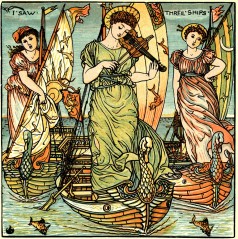
Moving on with relief, we discover that “the mysteries of the Holy Grail, the Turin Shroud and possibly the Ark of the Covenant will be solved”. Oh well, the relief was short lived. Although we are told by The Sun, with its <sarcasm>characteristically high journalistic standards</sarcasm>, that the “tomb… could also hold… the Turin Shroud, this is not one of Mr Goldsworthy’s claims. It’s all to do with the Knights Templar, wouldn’t you know, who knew the secret location of Joseph of Arimathea’s tomb on Burgh Island. He conjours up a scenario where “three ships arrived off the island bringing sacred treasures from the Holy Land to secrete in what they would have believed was a special place. They took away with them the shroud as a relic and souvenir.” So that’s clear, then. To put the icing on the cake, Mr Goldworthy maintains that “[t]he Christmas carol ‘I saw three ships’ is said to originate from this visit, as the ships sailed in on Christmas day to attract the least attention.” Those Templars apparently thought of everything.
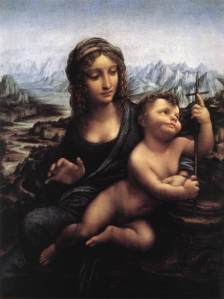
Thankfully, we’re almost done. The final piece of evidence, as one might have guessed, involved a Leonardo da Vinci painting, just not that one. This time, it’s Madonna dei Fusi (“The Madonna of the Yarnwinder”), which, we are assured by Mr Goldsworthy, depicts Burgh Island and Bigbury Bay. Well, there’s not actually an island and the landscape does not look like South Devon to me. It might have been more convincing if, like Burgh Island, we had a definite island connected to the mainland by a causeway. Perhaps good old Leonardo didn’t want to make the clue too obvious.
And that is about it, so far as the presentation of evidence goes. Of course, there’s also King Arthur’s tomb, the the bifurcation of the (ley) line at Avebury, Diodoros Sikoulos’s account of Burgh Island and the mysterious island of Ictis. But it’s all so ridiculously speculative, so without any understanding of context, so divorced from academic consensus, that it becomes too boring to examine. Sorry, Mr Goldsworthy, but that’s how your ideas strike me. It’s a long way from the “Indiana Jones meets Dan Brown with a vengeance” excitement promised by the Western Morning News!
It’s archaeology, Jim, but not as we know it…
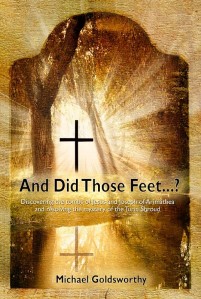
As with so many of these ‘amateur archaeologists’, the starting point is not archaeological fieldwork at all. Instead, it is based on a rehashing of an obscure bit of Latin attributed by the fourteenth-century writer John of Glastonbury to one Melchinus (usually anglicised to Melkin), alleged to have lived in the distant past. We are in very dubious territory with this material. John was probably writing his Cronica sive Antiquitates Glastoniensis Ecclesię (“Chronicles or Antiquities of the Glastonbury Church”) around 1343 and claimed to have access to texts that supplemented the account of William of Malmesbury (c1095-1143), the first historian to attempt a history of Glastonbury Abbey in his de Antiquitate Glastoniensis Ecclesię (“On the Antiquity of the Glastonbury Church”), probably written between 1129 and 1139.
John will have wanted to improve William’s work, which was by his time over two hundred years old. He brought it partly up to date with the work of Adam of Domerham’s Historia de Rebus Gestis Glastoniensibus (“History about Glastonbury Deeds”), itself a continuation of William of Malmesbury’s work up to 1291. He re-orded William’s work to give it greater chronological focus and inserted additional material. This included details from the Gospel of Nicodemus, the Transitus Marię (“Assumption of Mary”), various Grail romances (although John does not mention the grail) and other sources, including the work of Melchinus. The alleged extract is often known as The Prophecy of Melkin. John is the first writer to connect Joseph of Arimathea with Glastonbury, basing his account on a marginal note added to a text of William’s de Antiquitate Glastoniensis Ecclesię in the thirteenth century. He is also the earliest writer to mention Melchinus.
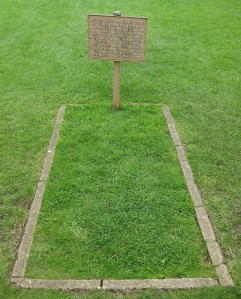
All later writers who mention Melchinus are derived from John of Glastonbury until the antiquary John Leland (1503-1552), who may have seen material at Glastonbury also attributed to him; the additional material is related to the developed Arthurian legend, mentioning Gawain and Arthur’s burial at Glastonbury. This would place Melchinus later than the discovery of the alleged grave in 1191. Leland’s contemporary John Bale (1495-1563) states that Melchinus wrote a work de Arthurii Mensa Rotunda (“On Arthur’s Round Table”). Once again, we are looking at an author who is alleged to have written material dealing with the fully developed Arthurian legend. He mentions two other books by Melchinus, de Antiquitatibus Britannicis (“On British Antiquities”) and de Gestis Britannorum (“On the Deeds of the Britons”). No-one has seen any of these works since then.
In John Pits’s (1560-1616) Relationum Historicarum de Rebus Anglicis (“Of Historical Relations about English Matters”), published posthumously in 1619, he places Melchinus in the reign of Maglocunus, in the middle of the sixth century. This is clearly fantasy: perhaps he was struck by the superficial similarity of the names. Nevertheless, the idea that Melchinus was a Welshman named Maelgwn has been repeated many times (and the common mis-spelling ‘Maelgwyn’ is a sure sign that the writer does not know what they are talking about!) and can be found on the majority of web pages dealing with him. The name Melkin actually looks Middle English, which would be appropriate for a writer in the High Middle Ages who seems to have been concerned with the Arthurian legends.
So what is this mysterious prophecy that has led Michael Goldsworthy to jump to some quite unjustified conclusions? It runs as follows:
Insula Auallonis auida
funere paganorum,
prę ceteris in orbe
ad sepulturam eorum omnium
sperulis prophecię uaticinantibus decorata,
& in futurum
ornata erit
altissimum laudantibus.
Abbadare, potens in Saphat,
paganorum nobilissimus,
cum centum et quatuor milibus
dormicionem ibi accepit.
Inter quos Ioseph de marmore,
ab Arimathia nomine,
cepit sompnum perpetuum;
et iacet in linea bifurcata
iuxta meridianum angulum oratorii,
cratibus pręparatis,
super potentem adorandam virginem,
supradictis sperulatis
locum habitantibus tredecim.
Habet enim secum Ioseph
in sarcophago
duo fassula alba & argentea,
cruore prophetę Jhesu
& sudore perimpleta.
Cum reperietur eius sarcofagum,
integrum illibatum
in futuris videbitur,
& erit apertum toto orbi terrarium.
Ex tunc aqua, nec ros cęli
insulam nobilissimam habitantibus poterit deficere.
Per multum tempus ante
diem Iudicialem in Iosaphat
erunt aperta hęc,
& viventibus declarata.
I translate it (badly but literally):
The Isle of Avalon, eager
For the corpses of pagans,
Foremost of others in the world
For the burial of all of them,
Decorated with foretellings of the prophet of the world
And in the future
Will be embellished
With those praising the Most High.
Abbadare, powerful in Shephatiah,
The most noble of pagans,
With one hundred and four thousand
There accepted eternal sleep.
Among those, in a marble slab, Joseph,
Of Arimathea by name,
Took perpetual sleep;
And he lies in a split line
Next to the south corner of the oratory
Made from reeds,
For the worship of the powerful virgin,
Of the aforementioned world
Thirteen inhabiting the place.
Indeed, Joseph has with him
In his sarcophagus
Two small vessels, white and silver,
With the blood of the Prophet Jesus
And His sweat full to the brim.
When his sarcophagus shall be rediscovered
Whole and complete
Will be seen in future times
And it will be open to all the lands of the globe.
From then on, neither water nor star jelly
Will be able to be lacking for the inhabitants of the most noble island.
For a long time before
The Day of Judgement in Jehoshaphat
These things will be open
And declared to the living.
Such is the stuff of which wild goose chases are made! I find the promise of the future abundance of a slime mould particularly fun…
This was originally going to be a short post. I had seen the story in the press and saw how ludicrous and without evidence it was. I believed that I could write a short debunking of a story that would obviously lead nowhere other than madness. I was wrong. There is just so much wrong with this short newspaper story that I despair of getting to the bottom of it. Thank goodness I haven’t read the book!


This learned (and decorative article) is a sledgehammer to crack a nut. And while there are two opinions at least about the Turin Shroud, nobody doubts that it is in Turin.
LikeLike
I started out thinking I could use a nutcracker…
LikeLike
Where does your translation of definition of “in linea bifurcata” come from? Admittedly, I don’t speak latin, and my ability to translate is limited to google translate. Is there additional text that puts it in context that makes the “garment” translation make more sense? I’m by no means advocating on Goldsworthy’s behalf here – just curious.
LikeLike
My translation is based on the fact that in medieval Latin, linea can mean either ‘line’ or ‘linen (garment)’. The idea of a body being buried in a split garment rather than in a split line seems to make more sense to me.
LikeLike
I’m not sure which makes more sense – unless a “split garment” has some medieval meaning. Based on your full translation, couldn’t it also refer to a geographical location within the cemetary (eg: on the divided line)? Please forgive my obsessive nature – I know it’s one line from a longer work. For whatever reason, I fixated on it, and I love a good puzzle. I count myself lucky I didn’t decide to try and parse the whole translation.
LikeLike
The dificulty I have with translating linea as ‘line’ is that it makes little sense in context: the text at this point is describing the grave of Joseph of Arimathea in the southern corner of a wattle chapel, not a cemetery. Given that the rudimentary nature of the buikding is stressed, the floor will have been clay and it’s difficult to see how the writer envisaged it being marked with a ‘split line’. I wonder if he had in mind a linen tabard, which could easily be described as ‘split’. Of course, that raises the spectre of the Templars, but that would be a perfectly acceptable allusion coming from a thirteenth-century writer (which is what I believe Melchinus/Melkin to have been).
LikeLike
That doesn’t seem to make sense to me – it sounds to me like it’s being used to describe where he lies … but then again it also describes it as being in marble, but made of reeds. For me it begs the question of whether or not that is a commonly used phrase to describe a linen garment or tabard, or is it almost always used in reference to something else … or is this just poetic license on the part of the writer? Maybe it’s one of those things that maybe an expert on period linguistics would know right off the bat, and something the rest of us would have to guess at. In any case – thanks for the reply and for your work on the blog!
LikeLike
The chapel is made of reeds and wattles; the tomb is marble (although I wonder if marmor is being used figuratively to just mean “tomb”). The poem is deliberately obscure, as prophetic verses tend to be (just think Nostradamus!), and I suspect that a lot of the language is both flowery and allusive rather than literal.
LikeLike
I guess it would be expedient just to read the explanation Goldsworthy gives in http://templartreasure.blogspot.co.uk. It’s quite simple.
Melkin in antiquity was known as a geometer by most commentators. Melkin says to find Joseph’s tomb look for where a line bifurcates inside a sphere (Avebury stone circle). 104 nautical miles from that point you will find the island of Avallon (what the whole prophecy is about). The line one has to bifurcate at 13 degrees is the St.Michael ley line. Quite obvious when he names the Island and the location through the word Supradictis which is a pun saying THE TOMB IS “up high in Ictis”. Don’t think Joseph of Arimathea would be ignorant of Ictis if he was a tin trader as Cornish legend portrays. This is not Bad Archeology but just a theory that needs proving. Hope this helps because I enjoyed the book alot and it is an intruiging thesis with some non-mainstream views. Goldsworthy deconstructs the prophecy so that it does appear as if this ancient Welsh bard is revealing an island off the Devon coastline.
LikeLike
I’m afraid it isn’t simple at all. The reason I don’t use Michael Goldsworthy’s translation of Melchinus is that it is tendentious and wrong in places. He also accepts a quite fanciful view of Melchinus/Melkin that was spun by later antiquaries. This is why I discuss the history of his text in some detail. In “antiquity”, Melkin was not known at all (unless by “antiquity” you mean the early modern period, which is not its usual meaning). He is not attested before the thirteenth-century marginalia in William of Malmesbury’s text of de Antiquitate Glastoniensis Ecclesię. Any writer who places him earlier than the High Middle Ages has to explain how he was able to write de Arthurii Mensa Rotunda, as there was no concept that such as thing as the Round Table existed before the twelfth century, when the Anglo-Norman writer Wace (c 1115-1183) translated Geoffrey of Monmouth’s Historia Regum Brittanię into French and mentions the Roonde Table just once. No earlier writer mentions it.
With the Latin text of the “Prophecy”, he does not say to “look for where a line bifurcates inside a sphere”: he says that iacet in linea bifurcata iuxta meridianum angulum oratorii, which means that the body of Joseph lies inside a split line (or split linen garment, perhaps a tabard, which is a translation I’ve come to prefer) that is in the southern corner of the wattle chapel. The idea that the linea bifurcata originates in a sphere is simply not there in the Latin. The first occurrence of the word sperulis (for spherulis) is clearly linked with in orbe and describes the sphere of the world: medieval scholars were well aware that the earth is a sphere and they often use the word spheralis to describe it. In the second occurrence, it is linked with the word habitantibus, which refers to the residents of the wattle chapel, not with locum: it carries the sense that they are the worldly inhabitants of the place, rather than the spiritual. There is nothing that can possibly infer the stone circle (not that it’s a circle, not a sphere!) of Avebury.
The centum et quatuor milibus have nothing to do with 104 nautical miles (a mile is milia passuum, a thousand paces: you can’t leave out the paces and still mean miles!). They are 104,000 souls who, together with Joseph of Arimathea, are said to have met their deaths in Avalon. The tredecim are not degrees but habitantibus, residents. This is playing with numbers in the worst possible way!
The idea of supradictis being a pun on the supposed placename Ictis is ingenious but wrong-headed. Ictis is a “ghost” placename, mentioned only by Diodoros Sikoulos (as Ἴκτιν) and Pliny (as mictim); it has been known since the 1920s that this is an error for Οὐεκτίς/Vectis, the Isle of Wight. The traditional identification with St Michael’s Mount and Mr Goldsworthy’s new identification with Burgh Island are just plain wrong: there is no Ictis. That being the case, supradictis does not contain a pun and there can be no connection with Cornish tin.
While it is true that “Goldsworthy deconstructs the prophecy so that it does appear as if this ancient Welsh bard is revealing an island off the Devon coastline”, there are huge problems with his deconstruction: Melkin was not an ancient Welsh bard (despite what you may read on the web) and the “clues” that lead to Burgh Island are simply mistranslations.
LikeLike
Hi Keith,
I think it makes perfect sense for a linen shroud to be used as a burial garment as such but what do you make of the letter of St. Augustine (d. 604 AD) to Pope Gregory which many claim to state ‘that there was a church in the west of Britain that was divinely constructed for the salvation of His people’. I suspect this may not be a true translation either but rather someone’s interpretation?
Cheers,
Ed
LikeLike
Unfortunately, that comment (at least in the form you’ve quoted) isn’t in any correspondence between Augustine and Gregory. In fact, I can find it only on one blog site that deals with Glastonbury. Nevertheless, giving them the benefit of the doubt, as a quotation, I read it as saying that there was an existing church (an institution, not a single structure) in the part of Britain not under Anglo-Saxon control, that Augustine regarded as being established by divine providence.
LikeLike
The comment is typically peddled out by many websites insisting that Jesus visited Cornwall with Joseph of Arimathea, often to claim he built the church at Glastonbury. Can’t remember where exactly I saw it.
Do you have a link to the correct version by Augustine?
Cheers,
Ed
LikeLike
Unfortunately, not. It’s not included in the bits of correspondence between Augustine and Gregory that Bede quotes nor in any genuine letters of Gregory. The story seems to have started in the late tenth-century Life of St Dunstan; William of Malmesbury quotes the Life and claims that ex scriptis seniorum cognoscimus; quorum unus Britonum historiographus, prout apud Sanctum Edmundum, itemque apud Sanctum Augustinum, Anglorum Apostolum uidimus, ita exorsus est. There used to be an interesting discussion of these sources on the web, but it is now only available through the Internet Archive Wayback Machine. Although the writer of this page seems slightly credulous (he accepts the genuineness of the letter, despite it not appearing in the Vatican archives or any collection of Gregory’s known correspondence: the ability of medieval writers to forge purportedly ancient texts as authorities is rarely acknowledged), it is a useful description of the early attestations of the text. There is also further discussion here.
The text of the Vita Sancti Dunstani, attributed to a monk who signs himself B reads:
Erat autem quędam regalis in confinio eiusdem pręfati uiri insula, antiquo uicinorum uocabulo Glastonia nuncupata, latis locorum dimensa sinibus, piscosis aquis stagneisque circumducta fluminibus, et plurimis humanę indigentię apta usibus, atque sacris, quod maximum est, Dei dicata muneribus. In ea siquidem ipsius loca primi catholicę legis neophitę antiquam Deo dictante repperunt ęcclesiam, nulla hominum arte constructam, immo humano saluti coelitus paratam; quam postmodum ipse cęlorum fabricator multis miraculorum gestis multisque misteriorum uirtutibus hanc Sibi sanctęque genetrici Suę Marię consecratam fore demonstrauit. Huic etiam aliud addiderunt opere lapideo oratorium quod Christo eiusque Sancto Petro Apostolo dedicauerunt.
This does actually refer to a building (ęcclesiam) of miraculous construction (nulla hominum arte constructam). However, it’s not in any of Augustine’s letters, nor can any of the alleged sources mentioned by William of Malmesbury actually be traced. It looks to me like a medieval legend designed to inflate the claims of Glastonbury.
LikeLike
There is a reason this site is called bad archaeology. You have made an observation that”there are huge problems with his deconstruction” then without having read Goldsworthy’s evidence simply state that “Melkin was not an ancient Welsh bard and the “clues” that lead to Burgh Island are simply mistranslations”.
Your brief assessment of Goldsworthy’s de – construction of the Melkin prophecy makes way less or even no sense.
1) Allowing as Goldsworthy states: the whole prophecy is devised as a hidden set of instructions that lead to an Island which Joseph would most probably have had dealings with.
2) Every one of his numerical observations have meaning (given the object of the prophecy) and your equivalent translations are meaningless given the context that the bifurcated line is a starting point from which is an Island.
The observation that “Well, there’s not actually an island and the landscape does not look like South Devon to me” just shows that if you can’t be bothered to even look at the pictures in the book one should not really comment on the written substance. Check out the island on your information source http://en.wikipedia.org/wiki/Madonna_of_the_Yarnwinder
The version belonging to the Duke of Buccleuch (the one with the Island with the same profile as Burgh Island) when merged with the Lansdowne depiction(the one you display) puts Burgh island in its relative position to the river which exits by it.
I certainly do not agree with all Goldsworthy has to say but if you are going to critique, don’t use the Sun and Wikepedia as this leads to Bad Archeaology.
LikeLike
Ken, the “reason this site is called bad archaeology” is that people like Michael Goldworthy are doing it and I want to point out why they are wrong.
If you read my post properly, you’ll see that I do not “ simply state that “Melkin was not an ancient Welsh bard and the “clues” that lead to Burgh Island are simply mistranslations””. That’s an accusation you make through laziness. I have provided evidence that demonstrates that Melchinus/Melkin cannot have been “an ancient Welsh bard”: it’s there for you to read. I’ve also provided a translation of the Latin text that avoids the tendentious mistranlsations of Michael Goldsworthy.
Goldworthy provides no evidence whatsoever that we should regard Melchinus’s prophecy “as a hidden set of instructions that lead to an Island which Joseph would most probably have had dealings with”. Sure enough, it’s a prophecy dealing with Avalon but, at the same time, it takes for granted the High Medieval identification of Avalon with Glastonbuty. There is no need to provide instructions: Melchinus simply assumes the identification.
It may be true that “[e]very one of his numerical observations have meaning”, but that is because it is easy to find hidden significance in numbers that the writer never intended. I’ve already pointed out why the text does not mention any distance in miles (let alone nautical miles, which is Michael Goldsworthy’s fantasy: the entire concept is a nineteenth-century one, that no medieval writer could have incorporated into his prophecy!), no angles in degrees…
There is no context in which a “bifurcated line is a starting point”: the text specifies that the body of Joseph of Arimathea lies in linea bifurcata, which has to mean either “inside’ or ‘between’ whatever the linea bifurcata means, not at one end of one of a pair of split lines, as Michael Goldsworthy would have it. You can’t do this kind of violence to the Latin of the prophecy!
I’m happy to concede that, as with so many da Vinci paintings, there are different versions. But by what process ought we to “merge” two versions? What clue is there that da Vinci wanted two versions to be taken together? This is fantasy, not evidence!
Why is it that so many of my critics don’t seem to be able to read what I’ve written but then accuse me of not reading the material I’m criticising?
LikeLiked by 1 person
“nor is there evidence that “many churches” were built on “pre-existing pagan sites”, let alone Neolithic sites. ”
Forgive me for wandering away from the main thrust of the OP, but I understand that “borrowing” of earlier culture’s sacred sites and special places is an acknowledged archaeological common place? Just google “churchyard standing stones” for about a zillion examples, not to mention the notorious practice of pre-Christian local deities becoming Christian local saints, St Bridget, for example?
Obviously, a great many Neolithic and pagan sites became associated with fairies, demons, or worse, and were shunned in later times… but there are an awful lot that weren’t. Glastonbury, Avebury, and on and on. Co-opting the native paradigm is something Christianity is very, very good at. Or didn’t you have any decorated Yule trees in your place at Saturnalia just passed?
http://www.english-heritage.org.uk/daysout/properties/knowlton-church-and-earthworks/
LikeLike
I happened upon this page a couple of days ago. I hope you don’t mind if I add a few observations.
You say you have translated the prophecy literally, but there are places where your translation is far from literal. Notable among these is your translation of “ros cęli” as “star jelly”, where a truly literal translation would be “dew of heaven”. Latham’s Revised Medieval Latin Word-List (1965) offers “(?) nostoc 14c.” for the phrase (whether this is with reference to this passage, I don’t know), but this is a tentative interpretation, not a literal translation, and it seems likely that the literal meaning is intended here (as, for example, in the Vulgate text of Daniel 4.20 and 4.30).
Your translation of the “sperulis”/”sperulatis” passages is at best muddled. “Vatincinantibus decorata” is parallel to “ornata … laudantibus”: the island is currently embellished with people prophesying, but will in future be adorned with people praising [the Most High]. How are the people prophesying? By means of “sperulis prophecię” – balls (little spheres) of prophecy. Latham suggests under spherula “(?) gazing crystal a 1400” – this seems to refer to the present passage. “Sperulis” is ablative plural of “sp(h)erula”, not some form of the adjective “sp(h)eralis”. The “supradictis sperulatis” are the aforementioned people equipped with prophetic balls, and nothing to do with “the world”.
“De” usually means “from” or “of”, and “de marmore” cannot mean “in a marble slab”. If “marmore” does mean “a (marble) tomb” (which I cannot find paralleled elsewhere), then perhaps Joseph is being referred to as “Joseph of the Tomb” in allusion to his providing the tomb for Jesus’s body. But it is far easier to say what this doesn’t mean than to establish what it does.
“In linea bifurcata” does seem more likely to mean “on a forked line” than “in a split linen garment” as there seems to have been a tradition that Joseph’s tomb was located on a line:
“Et ut semper nosceretur ubi capelle iste coniungebantur, quaedam piramis in parte septemtrionali exterius et quidam gradus interius et meridies linialiter eas abscindunt. Iuxta quam lineam secundum quosdam antiquorum iacet Sanctus Ioseph cum magna multitudine sanctorum” (Carley’s 1978 edition of John of Glastonbury, p.2, ll.12-17).
“And so that it may always be known where these chapels join, a certain pyramid on the north side externally and a certain step internally to the south separate them along a line. Next to this line, according to certain of the ancients, Saint Joseph lies with a great multitude of saints.”
This is plainly akin to, but distinct from, the text of Melkin’s prophecy.
You should beware of trusting Bale’s assertion that Melkin wrote a book on the Round Table. Although he did have access to material now lost to us, Bale (and, following him, Pits) frequently ascribed to authors books that he thought they ought to have written, rather than books that he knew to exist. Even if Bale had actually seen a work on the Round Table ascribed to Melkin, however, there is no reason to suppose the ascription genuine: to a writer acquainted with the prophecy and, say, Robert de Borron’s Graal, Melkin might have seemed a good candidate to father Round Table material on. Moreover, it is going beyond the evidence to assert “there was no concept that such as thing as the Round Table existed before the twelfth century”. Wace, writing about 1155, mentions the Round Table as something about which the Bretons already tell many stories, but we have no indication of how long they had been doing this.
It is also, strictly speaking, not true that milia needs to have passuum for it to mean “miles”. Gildas, for example, omits the passuum in c.3 of De excidio (where, however, the context makes it abundantly clear that he is referring to distances).
In conclusion, I ought to add that Goldsworthy’s offering is clearly yet another instance of the lamentable quarter-educated twaddle that disgraces so many modern publishers’ catalogues. But if we are to argue against this sort of thing, we need to be sure that our own arguments are above reproach.
[Note: I am aware that both Latham’s Word-List and Carley’s 1978 edition of John of Glastonbury have been superseded, but I cannot afford their successors, and thought it better to run with what I have available. I don’t think any salient point has been affected by this.]
LikeLike
Leonardo da Vinci painted two versions of The Madonna of the Yardwinder. The one you show is the wrong one. The one in the National Gallery of Scotland shows an exactly realistic picture of Burgh Island in the background. Why would Leonardo have done this?
LikeLike
You can see the National Gallery of Scotland version here. It still looks like a fantasy landscape and is a long way from being “an exaclty realistic picture of Burgh Island”.
LikeLiked by 1 person